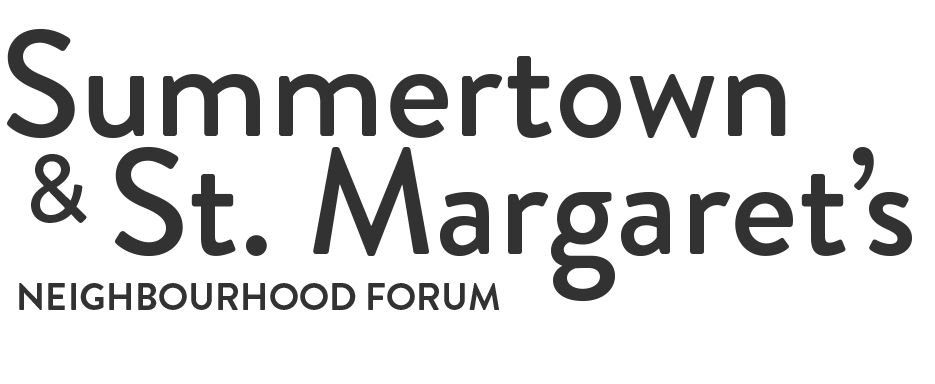J. South Summertown Terraces
General Overview
This area is arguably the most characteristic part of Summertown. It consists of the following four roads: Stratfield Road, Oakthorpe Road, Thorncliffe Road and Beechcroft Road.
Thanks to Victorian and Edwardian values and foresight, this area exemplifies the best of these periods. There is diversity in unity here.
The housing frontages are in line and are well set back from the road due to a covenant in the 1894 deed which triggered the development.
The designs followed various period-typical templates which, in almost all cases, resulted in the creation of two or three storey houses with bay-windows and gables. These houses are either semi-detached or appear in clusters of four to six.
The brickwork is mostly Oxford Yellow, with some use of red brick. Carved sandstone details over doors, gables and around windows, which at first appear standard, are in fact sufficiently different to make each facade individual, and this applies to the streetscape as a whole.
Many well-crafted details contribute to the cohesive visual interest of the area, reflecting the original vision of the builders-developers. Fortunately most of these have been retained by subsequent owners.
The area is a textbook example of Victorian and Edwardian urban design that enhances the quality of living in this area and engenders community involvement.
With very few exceptions the area’s original character has been respected during later development and it is of vital importance that this should continue.
Green spaces are limited to front gardens, which contain trees and planting that need to be preserved.
History
Before 1820, when house building started, the only house in this area was Diamond Hall. In J. Badcock’s survey of 1830 “Summertown” was a small village of about 90 houses. It was a healthy place of open fields and orchards, and indeed some of the surviving apple trees are now more then 100 years old.
The land between Woodstock and Banbury Roads – from what is now Staverton Road to South Parade – was owned by Henry Edward Bull Esq. who started selling off plots in 1870. After the City of Oxford boundary was extended in 1889 and water pipes were laid, this land was quickly recognised as an excellent speculative opportunity. These four ‘Speculators’ Streets’ were given romantic semi-rural names; Beech-Croft, Strat-Field, Oak-Thorpe and Thorn-Cliffe. The roads were built between 1890-1894 and named by 1897. The “Suburban Village of Summertown” of 1888 was already being transformed.
Covenants required a minimum prime cost per house of £300 to £400, depending on location, presumably to maintain standards. Other stipulations were “No ale beer…and no noisy, offensive or dangerous trade or business”.
We owe a debt to the Victorians who provided us with an impressive legacy in the form of these streets.
Issues
– Parking is an issue
– Front garden conversions to car park areas reduce the appeal of the area
– Some street lighting is out of character
– Shabby parking garages are an eyesore e.g. in Oakthorpe Place where the run-down garages let down the neighbourhood
– Proximity to the Summertown Shopping Centre and their location between the Banbury and Woodstock Roads leads to additional traffic (rat runs) that are beyond the capacity of the roads
– The operation of the one-way system and cycling facilities require further review
Assets
– A great community spirit with a good mix of families despite the rising costs of the properties
– The harmony of the remarkable period architecture
– Closeness to community facilities, shops, restaurants and public transport
– The 20 mph speed limit is appreciated as are traffic calming measures
– There are a number of historically significant buildings that warrant listing as heritage assets
Guidance for new development
– There is little availability for infill building but, where this is planned, great care should be taken to respect the cohesive Victorian character of the area
– This area should be appraised for conservation area status and current planning policy should recognize the urgent need for this
– Any further transport planning should avoid increasing the traffic in these roads and solutions for reducing traffic should be considered when circulation plans are reviewed
Download this Character Assessment as a pdf
Download the original volunteer written character assessments as a pdf:


